You can pick up a dedicated gaming notebook and put up with a sci-fi aesthetic with jet fighter exhausts, or you can pick up a stodgy business-oriented machine that looks like something out of a cubicle farm. Those are your only choices, right?
Wrong.
Today, you have other options, tweeners that straddle the gamer aesthetic and performance fence. They won’t stand out too much in either a boardroom or a LAN party. Here, we compare two such machines, the Dell XPS 15 and Razer Blade 15, that provide a mix of (relatively) conservative looks and at least decent gaming chops. But which is better?
Specs
| Dell XPS 15 9520 | Razer Blade 15 | |
| Dimensions | 13.56 inches x 9.06 inches x 0.73 inches | Base model: 13.98 inches x 9.25 inches x 0.78 inches 13.98 inches x 9.25 inches x 0.67 inches |
| Weight | 4.22 pounds (non-touch) 4.62 pounds (touch) |
Base model: 4.6 pounds 4.4 pounds |
| Processor | Intel Core i5-12500H Intel Core i7-12700H Intel Core i9-12900HK |
Intel Core i7-11800H (Base model) Intel Core i7-12800H Intel Core i9-12900H |
| Graphics | Intel UHD graphics Intel Iris Xe graphics Nvidia GeForce RTX 3050 Nvidia GeForce RTX 3050 Ti |
Nvidia GeForce RTX 3060 Nvidia GeForce RTX 3070 Ti Nvidia GeForce RTX 3080 Ti |
| RAM | 8GB DDR5 16GB DDR5 32GB DDR5 64GB DDR5 |
16GB DDR4 (Base model) 16GB DDR5 32GB DDR5 |
| Display | 15.6-inch 16:10 Full HD+ (1920 x 1200) IPS 15.6-inch 16:10 3.5K (3456 x 2160) OLED 15.6-inch 16:10 UHD+ (3840 x 2400) IPS |
15.6-inch 16:9 Full HD (1920 x 1080) IPS 144Hz 15.6-inch 16:9 Full HD IPS 360Hz 15.6-inch 16:9 QHD (2560 x 1440) IPS 165Hz 15.6-inch 16:9 QHD IPS 240Hz 15.6-inch UHD (3,840 x 2,160) IPS |
| Storage | 512GB PCIe 4.0 SSD 1TB PCIe 4.0 SSD 2TB PCIe 4.0 SSD |
512GB PCIe 3.0 SSD 512GB PCIe 4.0 SSD 1TB PCIe 4.0 SSD |
| Touch | Optional | Optional |
| Ports | 1 x USB-C 3.2 Gen 2 2 x USB-C with Thunderbolt 4 1 x 3.5mm audio jack Full-size SD card reader |
1 x USB-C with Thunderbolt 4 2 x USB-C 3.2 Gen 2 3 x USB-A 3.2 Gen 2 1 x 3.5mm audio jack Full-size SD card reader |
| Wireless | Wi-Fi 6E and Bluetooth 5.2 | Wi-Fi 6E and Bluetooth 5.2 |
| Webcam | 720p with Windows 11 Hello infrared camera | 1080p with Windows 11 Hello infrared camera |
| Operating system | Windows 11 | Windows 11 |
| Battery | 86 watt-hours | 65 watt-hours (Base model) 80 watt-hours |
| Price | $1,249+ | $1,800+ |
| Rating | 4.5 out of 5 stars | 4 out of 5 stars |
Price and configurations
The XPS 15 starts at a relatively low $1,249 for a Core i5-12500H, 8GB of RAM, a 512GB SSD, Intel UHD graphics, and a 15.6-inch FHD+ non-touch display. The most you’ll spend is $3,299 for a Core i9-12900HK, 64GB of RAM, a 4TB SSD, an Nvidia GeForce RTX 3050 TI GPU, and either a 3.5K OLED or a 4K+ IPS display.
The Blade 15 has two versions, the Base model with a last-gen Intel CPU, slower RAM, and slower storage. It’s also limited to a choice of 144Hz Full HD or 165Hz QHD displays. The Base model costs $1,800 ($1,540 on sale) for a Core i7-11800H, 16GB of RAM, a 512GB SSD, an RTX 3060 GPU, and the slower display. The other option is $2,300 ($2,050 on sale) for an RTX 3070 and 165Hz QHD panel. The regular Blade 15, which is a much faster and more current laptop, has an entry-level price of $2,500 for a Core i7-12800H, 16GB of RAM, a 1TB SSD, an RTX 3060, and a 240Hz QHD display. The most powerful configuration is $4,000 for a Core i9-12900H, 32GB of RAM, a 1TB SSD, an RTX 3080 Ti, and a 144Hz UHD display.
The XPS 15 is a premium 15-inch laptop for sure, but it’s significantly less expensive than the Blade 15. Of course, you get lesser-performing components, but that’s likely to matter most to hardcore gamers and very demanding creators.
Design
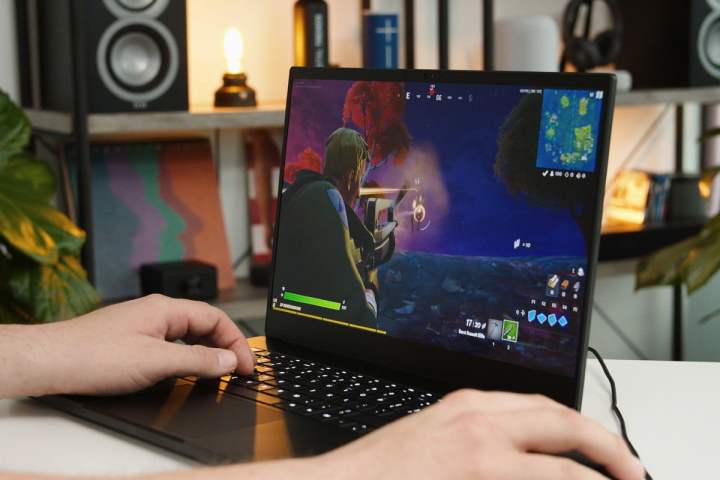
In 2020, Razer took the previous Blade 15 design and modernized it, expanding the display by framing it in smaller side bezels. That design remains today, and the avowed gaming notebook is relatively thin at 0.67 inches (0.78 inches in the less expensive Base model) while contained within a svelte, all-aluminum chassis that weighs a reasonable 4.5 pounds. We call that “reasonable” because that chassis tucks in some seriously powerful components (see the Performance section below). The Blade 15 also enjoys an excellent keyboard that offers sufficient key travel, beautiful Razer Chroma per-key RGB lighting with 16.8 million colors, and even spacing with only a handful of irksome layout issues. The attractive and sleek aesthetic manages to avoid projecting its owner as either an overt gamer or a conservative businessperson.
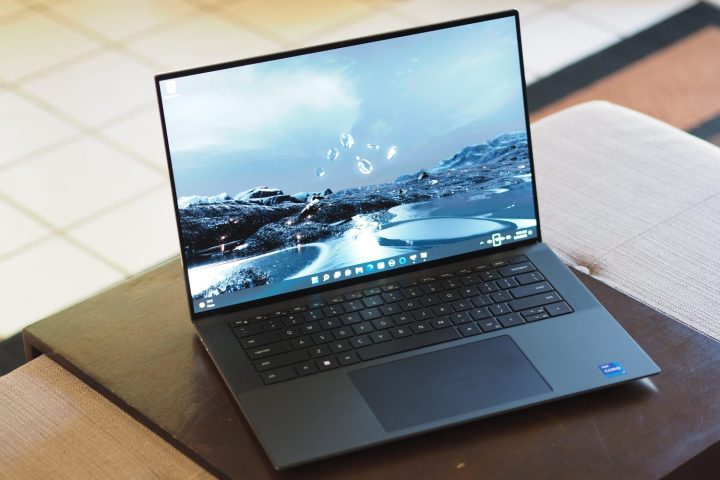
Dell’s 2022 XPS 15 9520 looks a great deal like the same version a couple of years ago. In fact, it’s pretty near to identical, but that’s not a bad thing. It’s made of machined aluminum and carbon fiber that combine for a sturdy and particularly comfortable notebook to carry around and use. It’s not the thinnest notebook around, coming in at 0.73 inches at its thickest point, and it’s not exactly light at 4.62 pounds when equipped with its 86-watt-hour battery (more on that later). But it’s one of the smallest 15.6-inch notebooks thanks to super-thin bezels. The keyboard is top-notch, with decent travel enhanced by a snappy mechanism that invites fast and accurate typing, and the touchpad — Microsoft Precision, of course — is expansive and oh-so-comfortable to swipe.
The Blade 15 is prettier and the Dell XPS is slightly smaller, but both are solidly built, and neither will embarrass you no matter the environment.
Connectivity is important on large laptops like these, and Blade 15 offers more ports overall. The XPS 15 has one more Thunderbolt 4 port, but the Blade 15 has additional USB-A and USB-C ports. Both have Wi-Fi 6E and Bluetooth 5.2, the latest standards.
The Blade 15’s 1080p webcam beats the XPS 15’s 720p version, making the Razer a better videoconferencing tool. Both laptops have infrared cameras for Windows 11 Hello passwordless-login support via facial recognition, and the XPS 15 also has an excellent fingerprint reader built into the power button. Neither has extensive privacy or security features beyond Windows 11 Hello.
Performance

The Blade 15 is built around Intel’s latest 12th-generation 45-watt 14-core/20-thread CPUs, ranging from the Core i7-12800H to the Core i9-12900H. Those are supremely speedy mobile CPUs that burn through whatever task they’re assigned whether physics-oriented gaming or video editing and encoding. The Base model features an Intel 11th-gen 45-watt Core i7-11800H with four cores and eight threads. Storage is also fast thanks to PCIe Gen4 solid-state drives (SSDs), and the CPU is kept well-fed by fast DDR5 RAM. Finally, given its fundamental nature as a gaming notebook, the Blade 15 offers powerful GPU options ranging from the Nvidia GeForce RTX 3060 to the RTX 3080 Ti.
The XPS 15 also equips Intel’s 12th-generation 45-watt parts, including the Core i7-12700H and the ultra-fast Core i9-12900HK. It, too, enjoys speedy PCIe SSDs and high-speed RAM. And, all of that computing power is mated with up to an RTX 3050 Ti that’s good enough for light gaming.
One difference from the Razer Blade is the Dell’s more conservative tuning and cooling system, which tries to keep things quiet and cool to the touch rather than enabling full-out — and hot — gaming performance. In addition, as a maker of gaming laptops, Razer’s thermal management skills are second-to-none, meaning that if you’re looking for all-out performance, the Blade 15 is likely to come out on top. It utilizes complex vapor chamber cooling and efficient fans to keep things cooler, longer.
We haven’t reviewed the latest Blade 15, but we expect that its performance in CPU-intensive tasks will be similar to the XPS 15. Dell gets a nod here for offering twice the RAM at the high end, 64GB versus 32GB.
For productivity workflows and creative applications that don’t use the GPU, both laptops will perform well. But when it comes to anything that utilizes the GPU, including creative and other high-end applications and particularly gaming, the Blade 15 takes a massive lead thanks to significantly faster GPUs.
Display
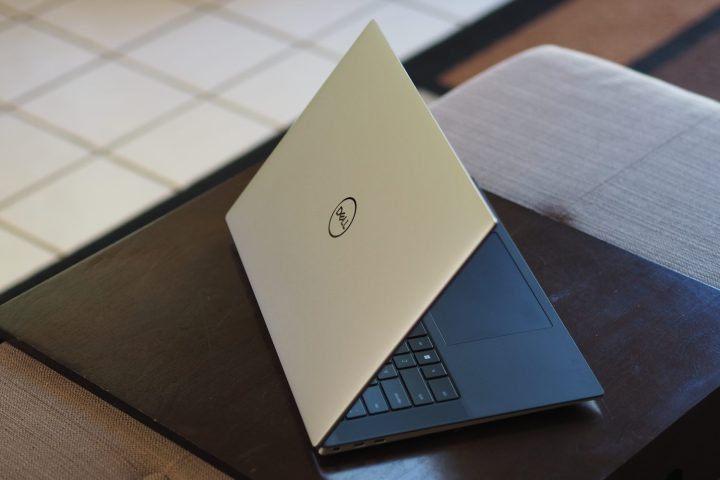
Don’t forget the displays. Dell offers three 16:10 display options, Full HD+ IPS, 3.5K OLED, and 4K+ IPS panels aimed at being bright and colorful. Both higher-resolution displays, whether IPS or OLED, offer spectacularly wide and accurate colors and plenty of brightness, while the OLED panel throws in the technology’s usual inky blackness. Outside of the Full HD+ displays, the XPS 15 is excellent for professional videographers and photographers with its near-100 percent AdobeRGB gamut support, accurate colors, and superior contrast and brightness.
The Blade 15 focuses on gamers with display options that range up to an incredible 360Hz refresh rate. Even so, Razer offers a wide mix of Full HD, QHD, and 4K displays including a QHD OLED option. The latter is what creators will want to choose, while the other displays will provide average color support, contrast, and brightness but with incredibly high refresh rates for tear-free gaming with the RTX 3080 Ti GPU. Note that the Blade 15’s QHD OLED panel runs at an unusually fast 240Hz, making it a great option for those who want no-compromise gaming to go with demanding creative work.
If you’re a gamer first and a businessperson second, then the Blade 15 is your better choice. The only problem with Razer’s display choices is that they’re all in the wider old-school 16:9 aspect ratio compared to Dell’s taller 16:10 aspect ratio that’s better for productivity work. The XPS 15 also provides well-rounded performance and beautiful displays only with pedestrian 60Hz refresh rates.
Portability
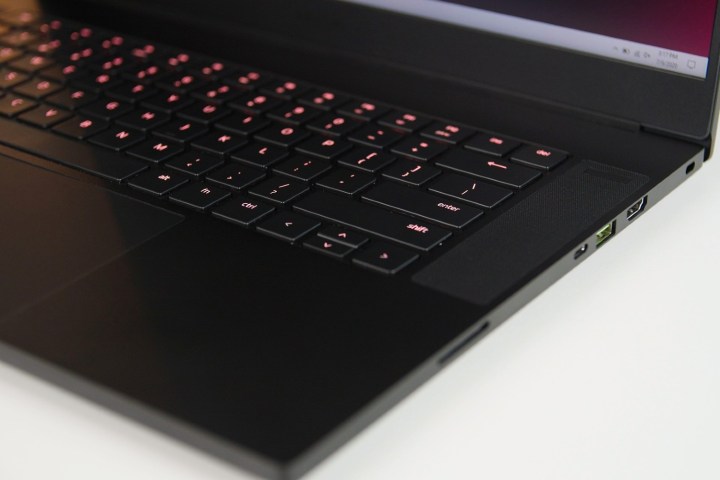
The Blade 15 and Dell XPS 15 are equally dense and close to equally thin, while the latter is a bit smaller overall thanks to its insanely small bezels. Neither are particularly easy on the back when you toss them into your backpack, but that’s the price you pay for carrying around so much power.
Both also have similarly sized batteries, with the Dell coming out slightly ahead with 86 watt-hours versus 80 watt-hours. Given their powerful components, it’s unlikely that either laptop will manage all-day battery life. Dell does offer a thermal tuning utility that can slow things down to improve battery life, so the XPS 15 may get a little more longevity. But you’re going to need your (large) power brick with both if you want to keep working past lunch.
The Razer Blade 15 is faster, but you’ll pay for it
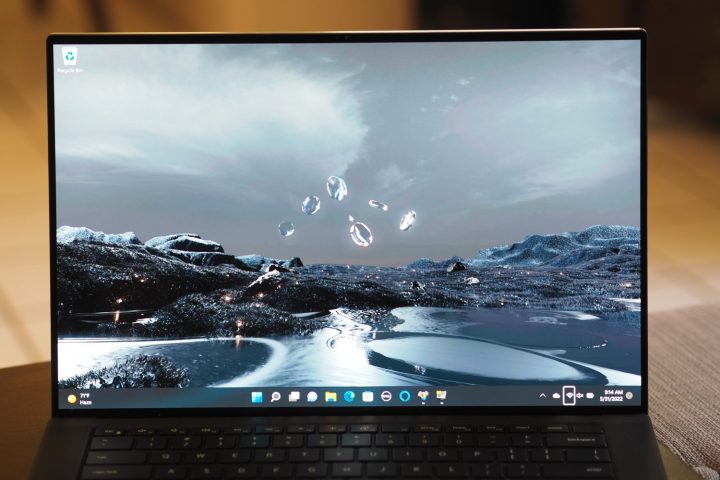
The Blade 15 is a more powerful gaming and creator workstation; that’s certainly true. And it has its own conservative and well-built chassis. The XPS 15, though, is more affordable and thus more accessible to more users.
Gamers and demanding creators will be happy to spend the extra money. But anyone looking simply for a powerful productivity workstation with some light gaming and creative tasks tossed in will appreciate the XPS 15’s price and overall design.
Editors’ Recommendations
Credit: Source link


Comments are closed.